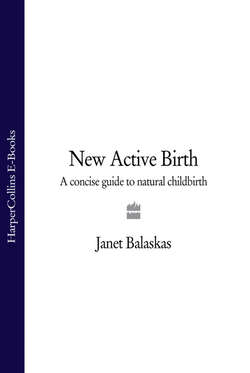Читать книгу New Active Birth: A Concise Guide to Natural Childbirth - Janet Balaskas - Страница 12
Epidurals
ОглавлениеThis is known as a regional anaesthetic which is injected locally into the epidural space between two lumbar vertebrae in the lower spine. When it works effectively the result will be a blocking of pain impulses, bringing numbness from the waist through the lower body.
While the effects of the drugs used for epidurals on the baby are not the same as Pethidine, we know that they enter the baby’s circulation and brain tissues within minutes (6). Their immediate and long-term effects on the neurological development of the baby are relatively unknown and direly under-researched, despite the widespread use of this form of pain relief, worldwide.
Side effects for the mother, such as severe headaches following the birth, can occasionally occur (these are caused by accidental scratching of the membrane surrounding the spinal cord by the injection needle), and a lowering of maternal blood pressure is common.
An epidural will certainly increase the need for obstetric intervention. Of course the mother will be immobile and reclining so contractions tend to be less efficient, and labour is often much longer and may need to be artifically stimulated with an oxytocic drip.
All these factors contribute to a lessening of the blood supply to and from the uterus, so foetal distress (lack of oxygen) is far more likely. Sometimes the pelvic muscles become limp and do not help the baby to rotate in the usual way (with the added disadvantage of being without the help of gravity).
An epidural can also inhibit the mother’s ability to push her baby out spontaneously and, one way or another, the risk of a forceps delivery or a Caesarean section is increased.
When mothers give birth actively, with the help of a midwife, the forceps rate rarely rises above 5 per cent and drugs are only used in cases of unavoidable distress or to save a life. By contrast, in countries such as the USA, the incidence of forceps deliveries can be, according to Doris Haire, as high as 65 per cent in some hospitals. An unnecessary forceps delivery can be traumatic for both mother and child and can occasionally result in injury or damage to the baby (8).
Although, at times, the total freedom from pain offered by an epidural may be indispensable, it is important, for a successful outcome, to weigh this advantage against the attendant risks, which are considerable. Occasionally the price of a few hours of comfort can be a damaged baby and may very well be a complicated birth (9-12).
So, might it not be better in the long run to learn how to use your body to release, minimise and transform the pain of labour and to have access to a pool of warm water or a shower – an effective and totally harmless way to reduce pain? If an epidural is really needed, then its use can be minimal and, in this way, the attendant risks are reduced.
